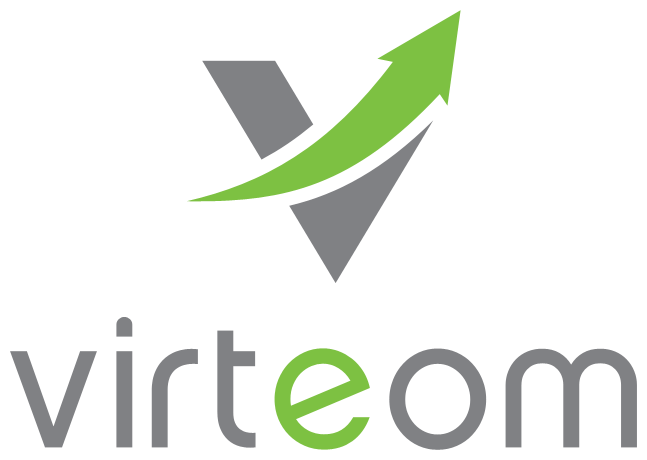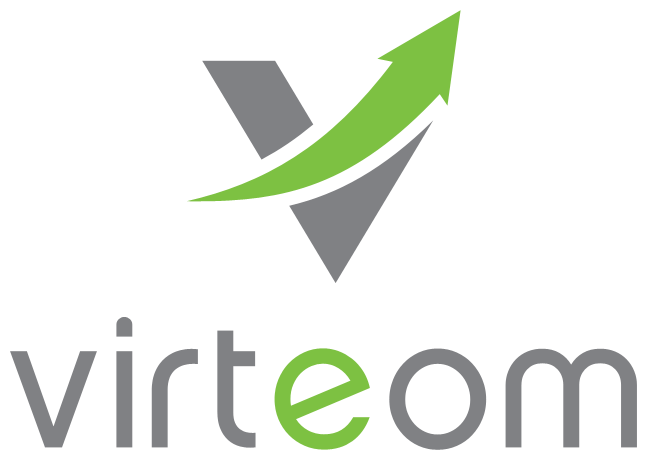Editing On-Page Content
Using Virteom, you can edit any of the body content of your pages. Generally speaking, this is the main content area on the page. In some cases there are multiple areas that can be edited, but that depends on your site's design and layout.
There are two ways to make a page editable. Which you use depends on preference and if you are already viewing the page you want to edit.
To make the current page editable
To make the current page editable, you must be logged into Virteom. Then, while viewing the page you want to edit, click the Editor link in the Menu Bar. Each editable text area on the page will have a dotted line around it. You can click inside that editable area to work with it.
To select a page to edit
|
If you are not viewing the page you want to edit, you may click the Navigation link in the Menu Bar, find the page you want to edit within the Navigation window, and click its Edit (arrow) icon. The page will appear with a dotted line around the editable area(s), and a Content toolbar will be visible. |
Editing the content
The part of your website inside that dotted line is much like any document in a word processor. You can add, delete, and change text just by typing.
You can also format that text using the WYSIWYG (What You See Is What You Get) editor. That means you do not need to know HTML or other programming languages. As you use the Content toolbar, the code for your selected formatting will be applied automatically.
Of course, if you're the type who wants to see the HTML behind what you've done, you can always switch to that view. Just click the "Source" button on the Content toolbar.
Other buttons on the Content toolbar include the following:
![]()
This button is used to specify a particular type of formatting for the selected text. Options in the drop-down will vary based on your site's design, but generally include Heading 1 ( which applies the HTML H1 tag), Heading 2 (which applies the HTML H2 tag), and so on, as well as Normal.
![]()
Use this button to specify the size, in points, of the selected text. To return to the default size, select the text and click the Clear Formatting button.
![]()
Makes the selected text bold, as in: The quick fox jumped over the lazy brown dog.
![]()
Makes the selected text italic, as in: The quick fox jumped over the lazy brown dog.
![]()
Underlines the selected text, as in: The quick fox jumped over the lazy brown dog. Use this option sparingly, as most people associate underlined text on a website with a link and will be frustrated if clicking it does not move them elsewhere.
![]()
Strikethrough the selected text, as in: The quick fox jumped over the lazy brown dog.

Makes the selected text smaller and slightly below the rest of the text, as in the "2": H20

Makes the selected text smaller and slightly higher than the rest of the text, as in the "2": H20
![]()
Clicking this button will insert numbering in front of the selected paragraphs and format them as a numbered list. (Note that how a numbered list is formatted is determined by your website design.) You may adjust some properties of the numbered list by right-clicking one of the numbered paragraphs and selecting "Numbered List Properties." This will open a dialog box where you can change the number at which the list starts or the type of numeral used.
![]()
Clicking this button will insert bullets in front of the selected paragraphs and format them as an unordered list. (Note that how an unordered list is formatted is determined by your website design.) You may adjust the type of bullet used by right-clicking one of the bulleted paragraphs and selecting "Bulleted List Properties."
![]()
Each of these buttons selects a type of text alignment, including left, centered, right, or fully justified.
![]()
Opens the spell checker, which will allow you to spell-check all of the content in the active text area. This opens a spell checker window that will display any misspelled words and allows you to ignore or correct them. When the spell check is complete, be sure to click the "Finish Checking" button (NOT "Cancel") in order to update the page with any corrections.
![]()
Use this button to create a link from one page on your website to another. To do so, select the text (or image) that you wish to turn into a link; then click the Link button, which will open the "Link" dialog box. For more information on using this dialog box, see "Working with Links."
![]()
This button is only active when your cursor is inside a link area or when you have linked text or a linked image selected. In that case, it is used to remove the link from the selected area. Just click it to completely remove the link.
![]()
Clicking this button will insert an anchor link, which allows you to link to a specific area on a page. For example, if you have a list of frequently asked questions at the top of a webpage and want each question to link to the corresponding answer lower on the page, you can insert an anchor at the beginning of each answer. Then you can use the "Link" button for each question, pointing the link at the corresponding anchor. To insert the anchor, you may place your cursor where you want the anchor to be placed, or select text or an image.
For more information on working with anchors, see "Working with Links."
![]()
This button is used to insert an image onto a webpage. To do so, place your cursor where you want the image to be placed, then click this button to open the "Image Properties" dialog box. For more information on using this dialog box and working with images, see "Adding Images to Your Website."
![]() This button is used to insert a table onto a webpage. To do so, place your cursor where you want the table to be placed, then click this button to open the "Table Properties" dialog box. For more information on using this dialog box and working with tables, see "Working with Tables."
This button is used to insert a table onto a webpage. To do so, place your cursor where you want the table to be placed, then click this button to open the "Table Properties" dialog box. For more information on using this dialog box and working with tables, see "Working with Tables."
![]()
Inserts a horizontal line. Note that how the line is formatted is determined by your website design.)
![]()
Use this button to insert a special character, such as an en dash, em dash, copyright symbol, bullet, etc., into the content.
![]()
This button is used to specify a particular type of block or inline formatting for the selected text. While the "Format" dropdown applies paragraph tags such as H1 and H2, this button can apply formatting just to selected portions of a sentence or paragraph. Options in the drop-down will vary based on your site's design, and most are not frequently used.
![]()
Opens the "Find and Replace" dialog box that allows you to search for text within the active text area and, optionally, replace it with different text.
![]()
These buttons function the same way as they do in most text editors. They are cut, copy, and paste, allowing you to move or copy selected text from one area of the text editor to another. Note that the standard keyboard shortcuts of Ctrl+X, Ctrl+C, and Ctrl+V also work.
pasting content in as plain text:
 The clipboard tool (pictured left) allows you to paste text from anywhere in the world without it's formatting.
The clipboard tool (pictured left) allows you to paste text from anywhere in the world without it's formatting.
Why do you need to paste in as plain text? When you copy text from websites, Microsoft Word and other sources, there is likely formatting associated with that text. If you do not paste in as plain text, the font (face and size), bulleted lists, and bold / italic fomatting with be transfered over. All of your text formatting should be handled within Virteom CMS.
What happens if you forget to paste in as plain text?
(Virteom CMS 8 and older: black toolbar with eraser)
(RocketSites CMS 1: gray toolbar with "Tx")

 This alternative to the Paste button allows you to paste the text that is on the clipboard (i.e., previously cut or copied) as plain text, stripping out the HTML code that may be behind it. This is particularly useful when copying text from Microsoft Word or other word processors. To use this tool, place your cursor where you want to paste the text. Click the "Paste as Plain Text" button, press Ctrl+V on your keyboard, then click "OK" in the dialog box.
This alternative to the Paste button allows you to paste the text that is on the clipboard (i.e., previously cut or copied) as plain text, stripping out the HTML code that may be behind it. This is particularly useful when copying text from Microsoft Word or other word processors. To use this tool, place your cursor where you want to paste the text. Click the "Paste as Plain Text" button, press Ctrl+V on your keyboard, then click "OK" in the dialog box.

Use this button to erase all formatting and HTML tags from the selected text.
![]()
This button can insert a tag that will be replaced by content when the webpage is rendered. This feature is not generally used unless it has been customized for you.
![]()
These buttons function the same way as they do in most text editors. They are undo and redo, allowing you undo your most recent action and/or redo what you have just undone. Note that the standard keyboard shortcuts of Ctrl+Z, Ctrl+Y also work.
As you are working with on-page content – and when you are done – remember to save! Click the "Save Content" button on the Content toolbar as frequently as you want. Each time you save, you are creating a new version of the webpage, which can be used to rollback changes if desired. This also ensures that you do not lose your work should you navigate away from the webpage or lose your internet connection.
This page was edited on 07/09/2018 by Olivia Justice.





